Imagine windswept emerald hills dotted with cattle,
quaint stone towns with flower-lined paths,
craggy cliffs that plummet into a deep sea of crashing,
white-tipped waves and lighthouses that stand
steadfast and strong, much like
the locals themselves.
Batanes is one of the most remarkable destinations I’ve ever traveled to and, even as I revisit it for this CNBC Traveler feature, the magic of these islands in northern Philippines has not faded. Authored by Stephanie Zubiri and documented by me, this story the recollects our visit there was published online this week.
A cluster of islands in the northernmost region of the Philippines is so remote that they are actually closer to Taiwan than to most parts of the Philippines.
The islands sit 100 miles north of Luzon, the country’s largest and most populous island and home to the capital city of Manila. Yet, they couldn’t be further from the stereotypical tropical scene of swaying palms and white sand beaches associated with the Philippine archipelago.
Imagine windswept emerald hills dotted with cattle, quaint stone towns with flower-lined paths, craggy cliffs that plummet into a deep sea of crashing, white-tipped waves and lighthouses that stand steadfast and strong, much like the locals themselves.
This is Batanes — a captivating and magical place that feels more like the set of the historical drama “Outlander” than the “The Beach.
PASTORAL LANDSCAPES, PEACEFUL PEOPLE
Composed of three main islands — Batan, Sabtang and Itbayat — that sit between the North Pacific Ocean and the South China Sea, Batanes is often pummeled by unforgiving typhoons that form on both bodies of water.
It is also on the Circum-Pacific Belt, better known as the Ring of Fire, and prone to frequent earthquakes, one which damaged the island of Itbayat in July 2019.
Here, the land is forged by the elements and, in many ways, so are the people.
There is an air of mystery that shrouds the indigenous population of Batanes, the Ivatans. Due to its isolation, challenging climate and difficult landscape, the locals have built a society that values trust and real connection.
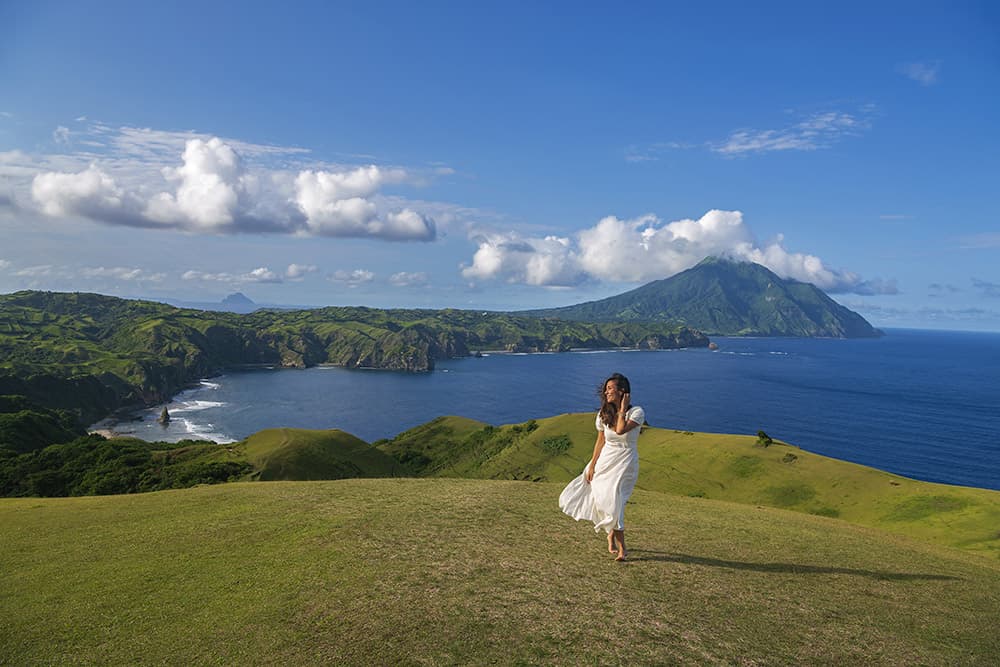
The author on the lush meadows of Rakuh A Payaman, aka Marlboro Hills, on Batanes, Philippines.
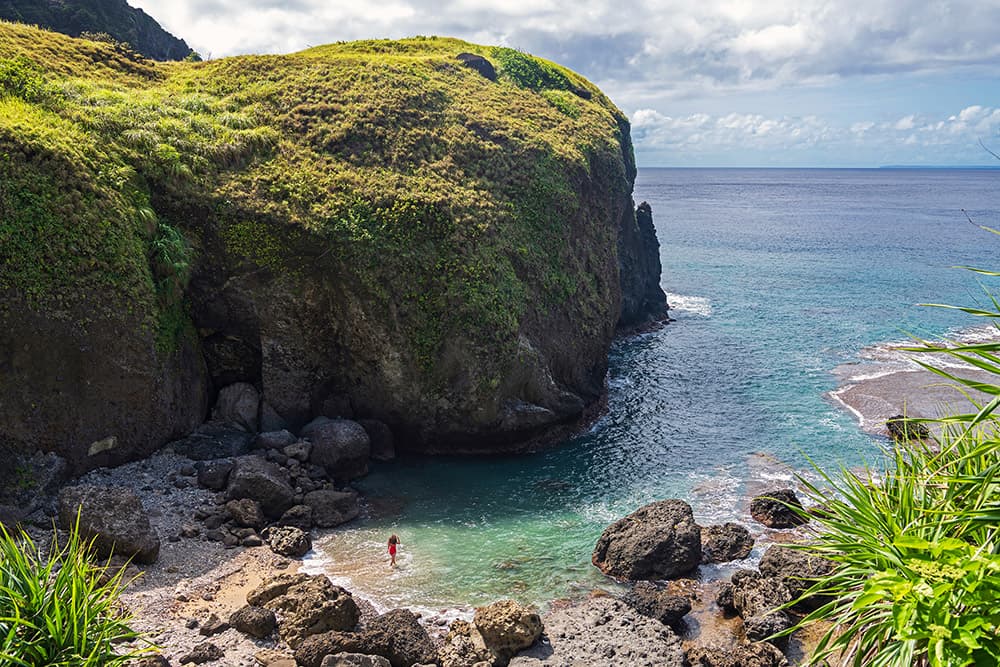
Homoron Blue Lagoon.
Unlike the boisterous and charmingly chaotic countrysides of the Philippines, which can feel more karaoke pub than idyllic paradise, Batanes and its people are quiet, pensive, orderly and peaceful. Warm and sincere, the Ivatans seek honest interaction with visitors who wish to learn more about their culture.
The Ivatans live in symbiosis with nature, and they care for their natural heritage with an almost spiritual fervor. They acknowledge the land as the source of their welfare and wellbeing and are adamant about sustainability.
The best example would be the absence of markets in the province; agricultural practices are designed to produce just enough food for the population, with very little surplus.
Here, Christian faith and spirituality permeate everyday life. The word “Dius” or God is used in many expressions: “Dius mamajes!” — or God will repay you is their way of saying thank you; “Dius machivan!” — may God go with you is their goodbye; or simply “Dius?” to ask if anybody is home. Once
there, visitors will commonly hear “Dius mavidin!” or may God be with you, which is how they welcome guests.
WHERE TO STAY
Unlike most parts of the Philippines, Batanes is sparsely populated.
The 2015 census counted only 17,246 people, which equates to roughly 205 people per square mile.
Stringent measures are in place to prevent overtourism, such as limiting the number of flights to the islands. The area is also subject to the Batanes Responsible Tourism Act, whereby the Philippine government declared the province a “responsible, community-based cultural heritage and ecotourism zone” in 2016.
As a result, travelers can expect to find homestays and small inns rather than branded hotels.
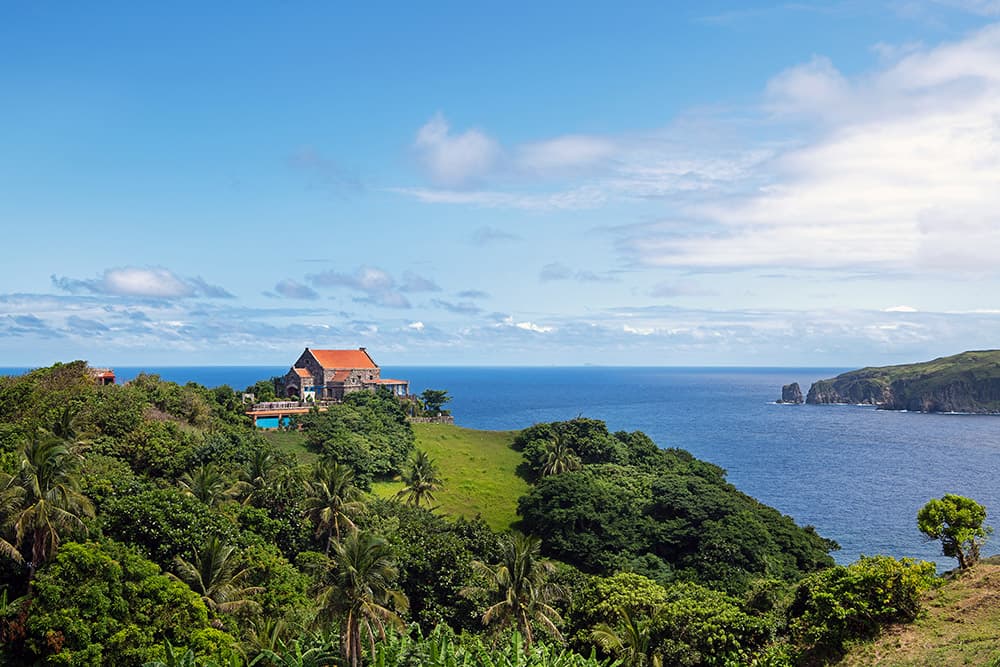
The bed and breakfast, Fundacion Pacita.

Food from Cafe du Tukon; Patsy, the niece of late artist Pacita Abad.
One establishment truly stands out: the former residence of the late artist Pacita Abad, Fundacion Pacita is a charming bed and breakfast that sits atop a lush grassy slope overlooking the sea.
Built in the traditional stone fashion, coupled with white-washed adobe walls, it is quirkily decorated in colorful tiles, repurposed furniture and Abad’s vibrant artwork.
Her niece, Patsy, who can often be found walking the premises with a cheery smile and a glass of wine, now runs the inn. She recently opened the fabulous Café du Tukon, which serves delicious contemporary interpretations of local delicacies, such as a carbonara pasta topped with salted dolphin fish, called arayu, rather than bacon or guanciale.
WHAT TO DO
Batan is the main island of Batanes. Due to choppy waters and unpredictable weather, crossing between the islands of Batanes can be difficult. Fortunately, Batan has much to offer and is easily accessible via commercial flights.
It is imperative to work with an accredited touring agency, such as IBS Tours and Travels, before organizing a trip. The agency can coordinate a car and guide to navigate the breathtaking coastal highway that loops around the island.
Agencies can also arrange stops at notable sites such as the iconic Basco Lighthouse and Tayid Lighthouse, the sloping hills of Rakuh a Payaman and the colorful waters of Homoron Blue Lagoon.
It’s also worth stopping at small, peaceful towns like Mahatao and Ivana, known for their churches and Spanish bridges, as well as Diura, home of the Mataw caste of mystic fishermen.
Weather permitting, the island of Sabtang can be reached via a 40-minute ferry ride. The breathtaking views from the cliffs of Chamantad Tiñan are worth it, as is the stone village of Chavayan where they make vakul, which are traditional headdresses made of stripped palm fronds that protect women field laborers from the elements.
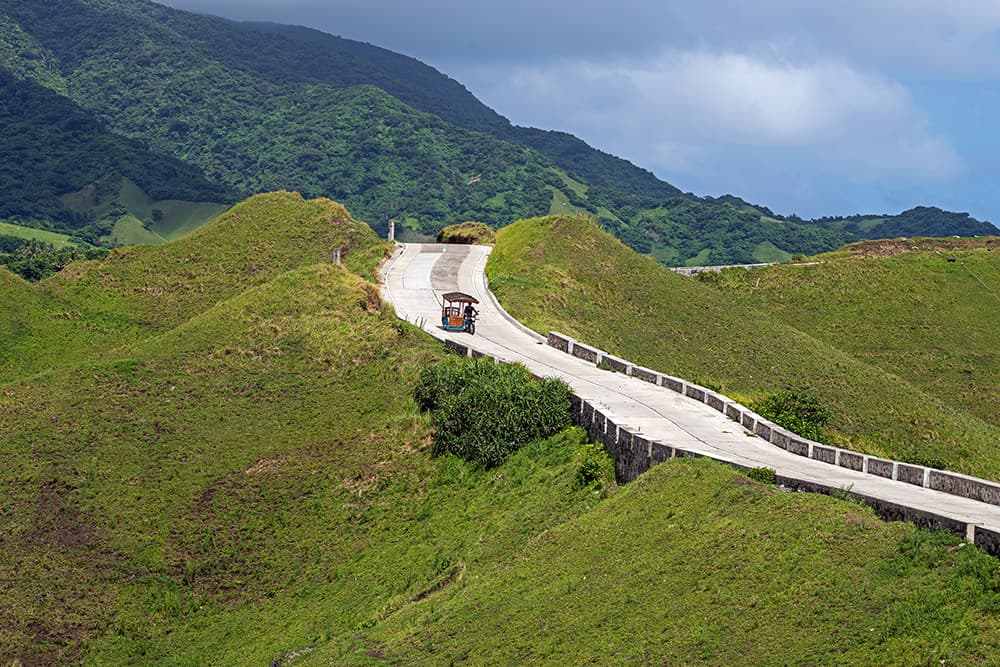
The pastoral landscape of Naidi Hills near the Basco Lighthouse.
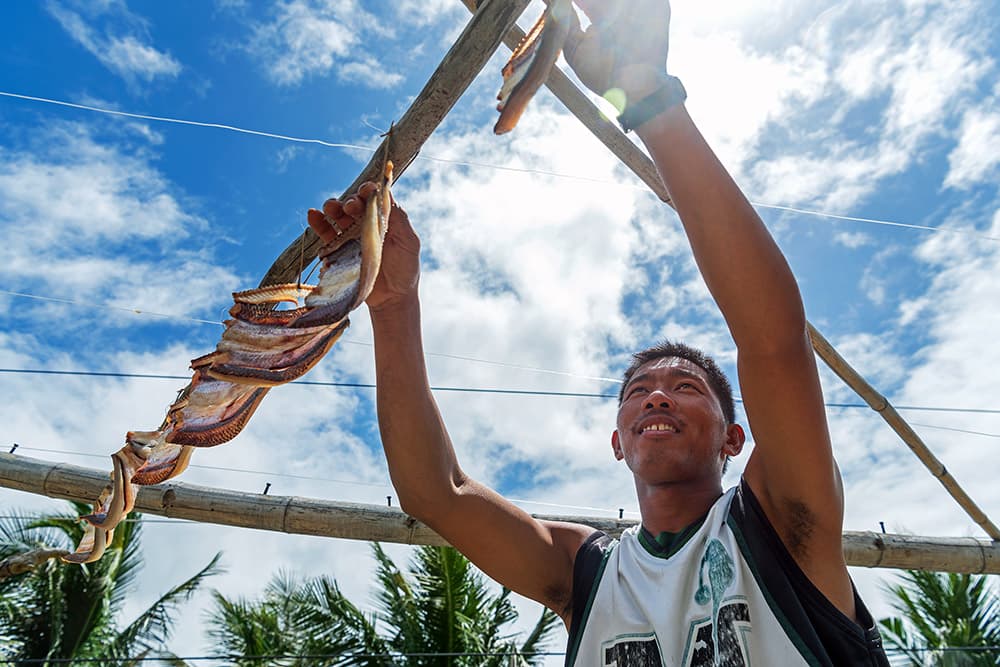
A fisherman in the village of Diura.
GETTING TO BATANES
The only real way to get there is to fly.
Flights can range from 80 to 100 minutes, and could be booked on Skyjet, Cebu Pacific and Philippine Airlines prior to the pandemic.
A trip to Batanes must be planned in advance and booked through accredited tour operators. The local government is very focused on sustainable tourism and preserving the natural and cultural heritage of the province.
There are a number of rules and guidelines — such as no bikinis on the beach — that tourists must understand and adhere to during the trip.
WHEN TO GO
While the Philippines is currently closed to international tourism, officials last month indicated interest in establishing “international travel bubbles,” or travel corridors with strict health protocols, with neighboring countries. Batanes, which registered its third Covid-19 case in December 2020, is currently closed even to domestic tourists. Local authorities are exploring ways to safely reopen with 14-day quarantines and put in place other health requirements.
Batanes’ “good season” runs from November to May. June to October is typhoon season and should be avoided. Travelers are advised to bring a lightweight rain jacket for spontaneous downpours and a light sweater for cool nights that can be found atop the chilly mountain peaks.
See more of my Philippines editorial work and read more of my CNBC Travel features in collaboration with writer Stephanie Zubiri.
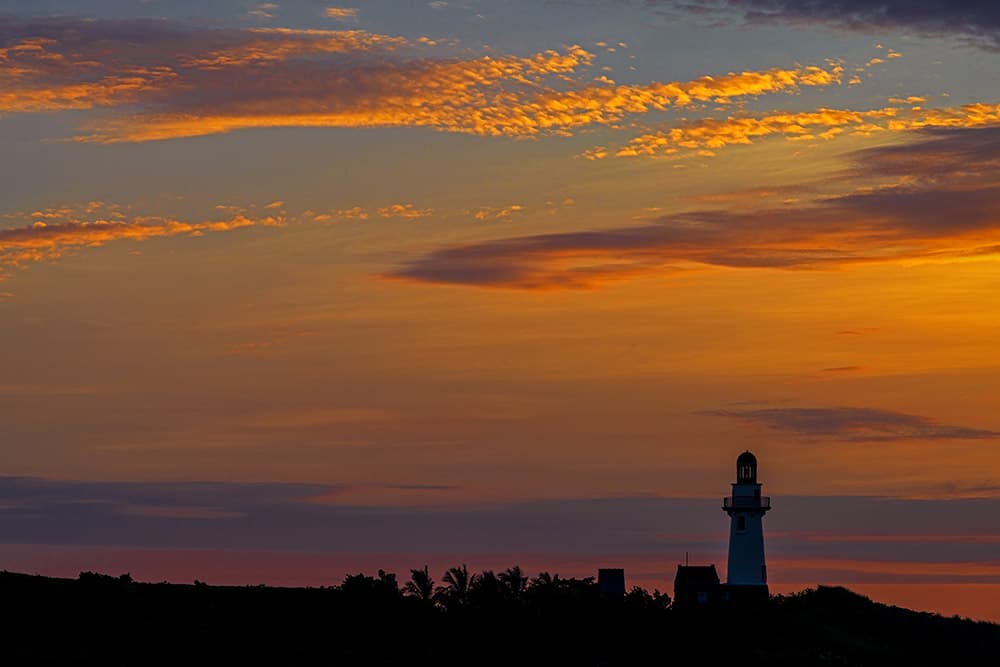
The Basco Lighthouse.



Share your thoughts